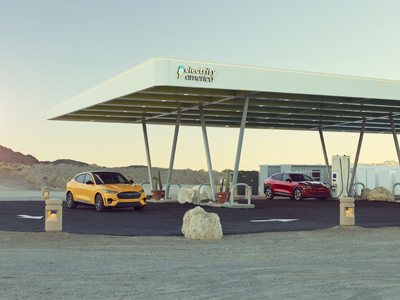With seven states taking steps to require all new passenger vehicles sold to be zero emissions by 2035, experts are looking closely at the cost and environmental impact of these cars, including their production, operation and disposal. The states include California, Massachusetts, Maryland, New Jersey, New York, Oregon and Washington.
Dr. Robert Freerks, a consultant in fuels and lubricants at RLF Enterprises, shared information during a webinar hosted by the Specialty Equipment Market Association (SEMA) about whether the current infrastructure can support the widespread adoption of electric vehicles (EVs) to meet the goal of net zero emissions by 2050.
“Everyone thinks of them as zero-emissions vehicles but… they have emissions from all of the energy that went into producing them, as well as the energy required to make the electricity that drives them,” said Freerks, who has a Ph.D. in synthetic organic chemistry and a history of studying fuels and lubricants to understand energy issues.
One of the main challenges, according to Freerks, is the electric grid is not set up to deliver the huge amounts of power needed to keep an EV fleet moving.
“It’s going to be an incredibly expensive increase in our electrical demand and supply to make an electric vehicle market work,” he said. “We’re not going to get there. There’s no way we are going to have zero emissions by 2050 in any realistic sense.”

However, Electrify America points to studies showing grid generation capacity is more than capable of meeting charging needs even with high EV market growth.
“There are innovative ways to support the electricity needs of the fast-growing EV industry---particularly through battery energy storage,” said Robert Barossa, president and CEO of Electrify America.
As of 2022, Electrify America installed on-site, behind-the-meter battery energy storage systems (BESS) at more than 160 DC-fast charging stations around the country, including more than 90 installations in California.
“These systems store power when electricity costs are low and supplement power during high points of consumption, helping to stabilize costs and help maximize renewable energy use,” explained Barrosa.
Raw Materials Used to Produce EVs
Compared to an internal combustion engine (ICE) vehicle, Freerks said the raw materials needed to produce an EV are massive. While conventional cars use aluminum and iron as the primary source of their metals, EVs and their batteries rely on huge amounts of precious metals, such as copper and lithium.
“Copper is becoming in short supply and an EV has four times as much copper in it than an ICE vehicle,” he noted. “We are going to be short of a lot of raw materials that are going to make these EVs producible.”
Although there is a relatively low volume of lithium in an EV, Freerks said the price has quadrupled over the last several months. The annual average U.S. lithium carbonate price in 2021 was more than double the previous year, according to research from a U.S. Geological Survey, Mineral Commodity Summaries, in January 2022.
“Metal costs are going up quickly and are going to increase the cost of batteries, and therefore, the vehicles that use them,” he said.
This is partly due to the reliance on these raw materials from other countries, such as Russia and China.
“We’re going to end up relying on other countries… for a lot of the raw materials that make our transportation system work,” observed Freerks.
Along with the seven states, Great Britain aims to go all-electric by 2035.
“If they did, they would need 7.2 million battery EVs, or about 1% of the total vehicle fleet,” said Freerks. “I can’t see that happening. It would take almost all the raw materials in the world today to make one country all electric.”
Environmental Impact of EVs and Battery Production
In addition to raw material shortages and rising costs, Freerks said EV lithium-ion batteries have a massive environmental impact.
Production of the metals used in EV batteries requires mining 90,000 pounds of ore and moving 200,000 to 1.5 million pounds of earth, he calculates, which is an average of 50,000 pounds earth moved per battery.
“To make a ton battery, which goes into a vehicle like a Tesla, you need to move between 700,000 and 1.3 million tons of earth,” he explained. “That is an incredible impact on the environment to move that much earth to get the raw materials to make a single battery.”
When evaluating the environmental impact of an EV, Freerks stressed the importance of taking a life cycle assessment, which includes looking at all energy sources and greenhouse gas emissions associated with the total lifecycle of a product.










Stacey Phillips Ronak